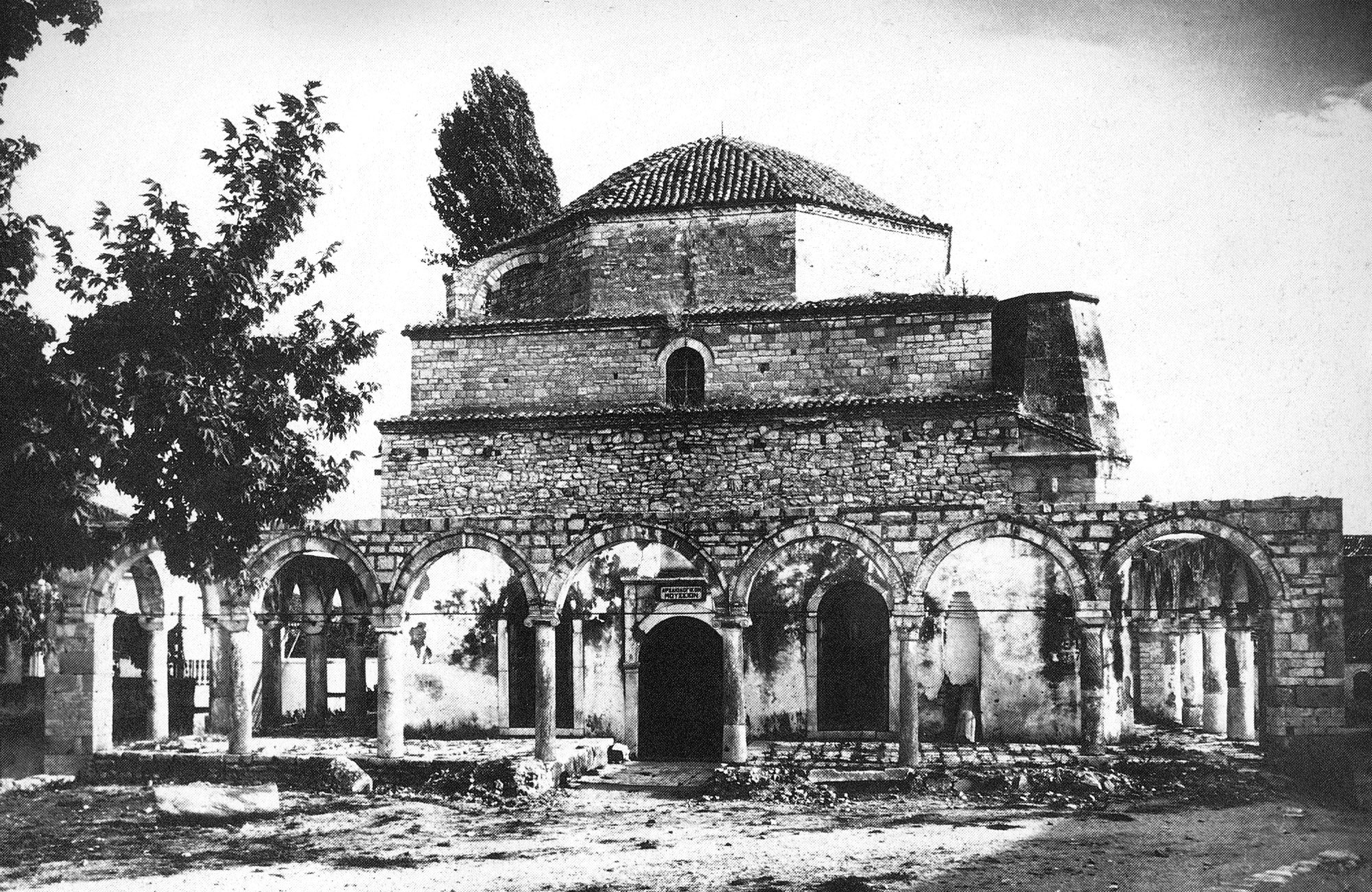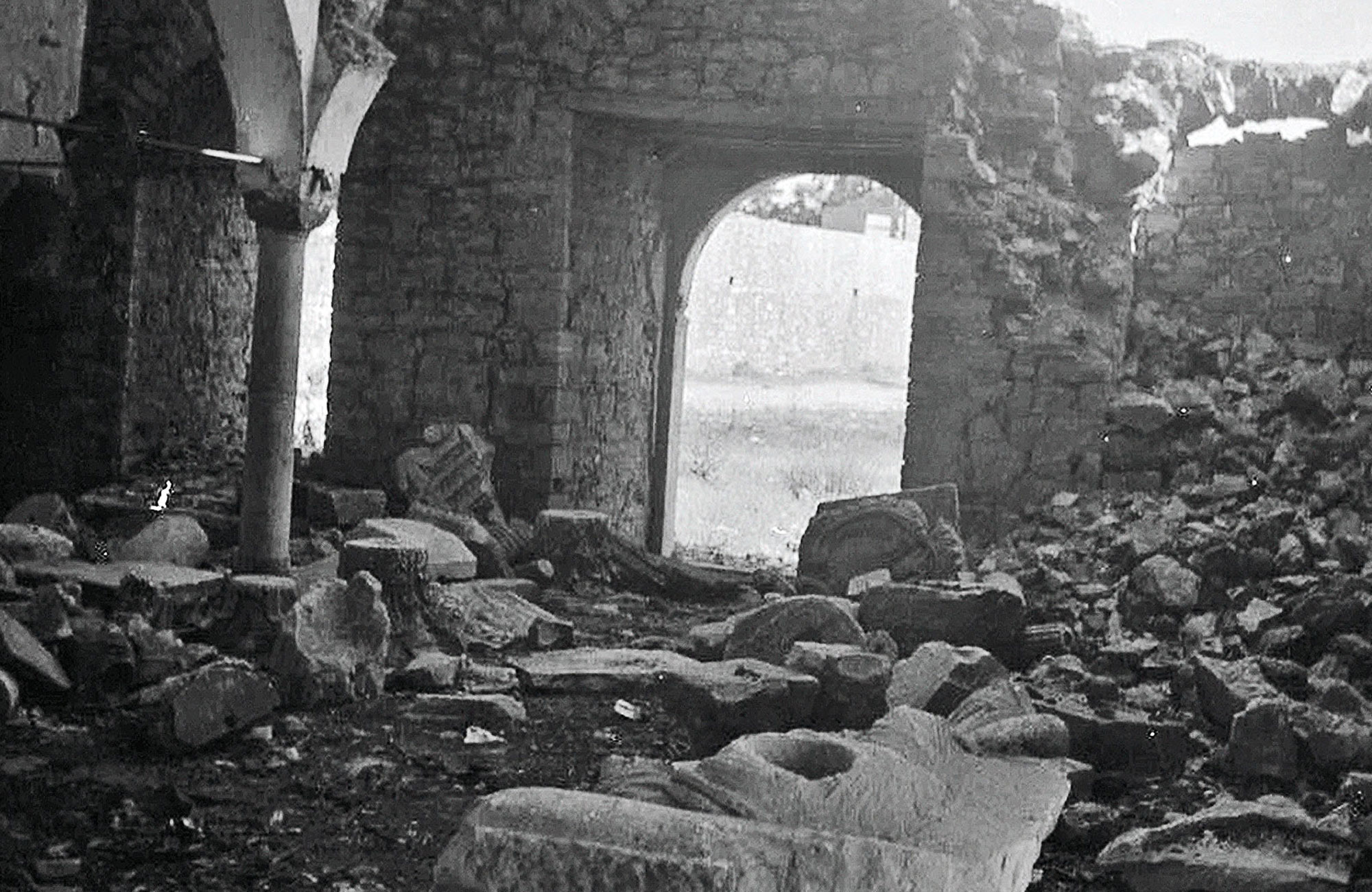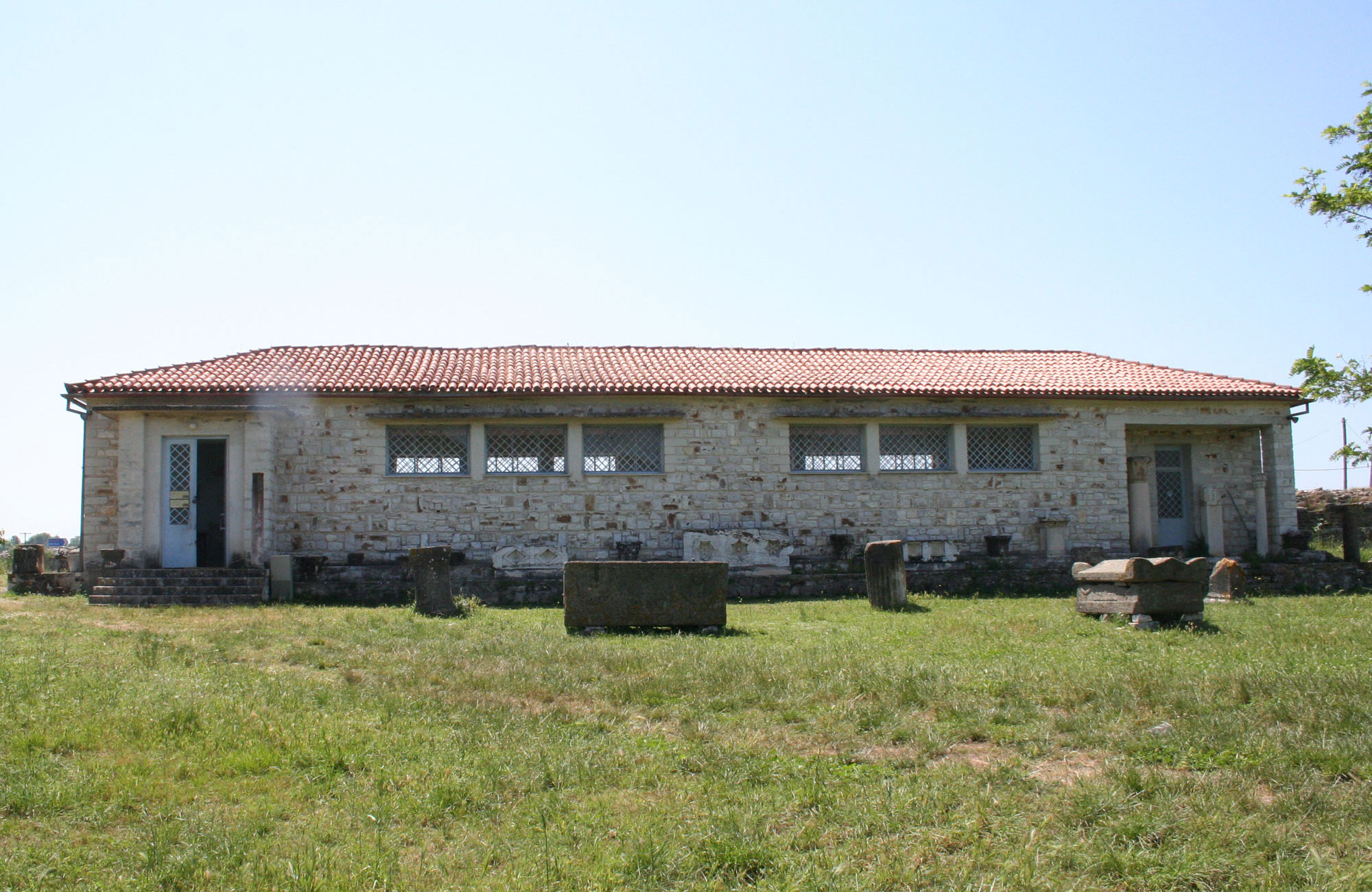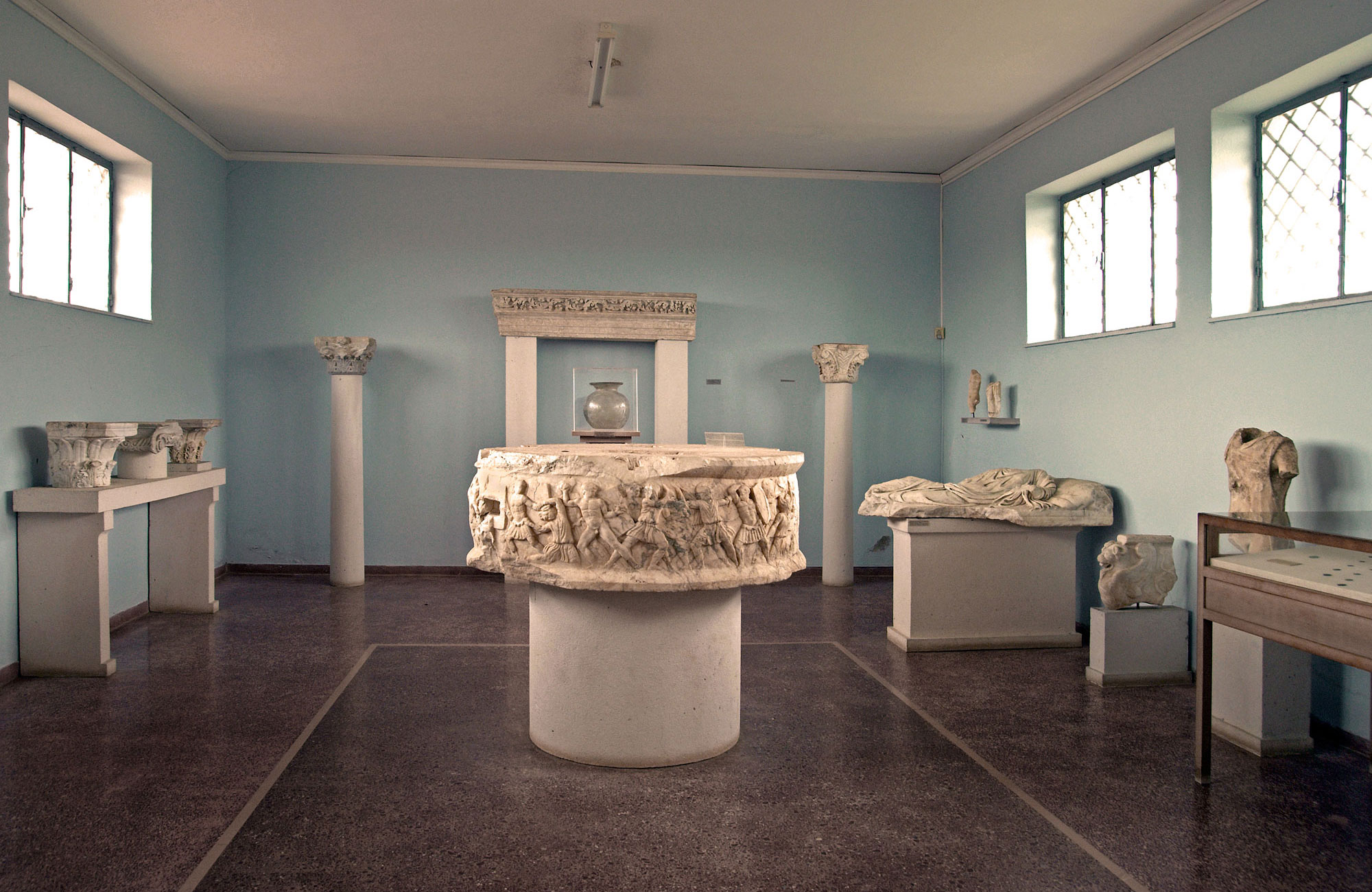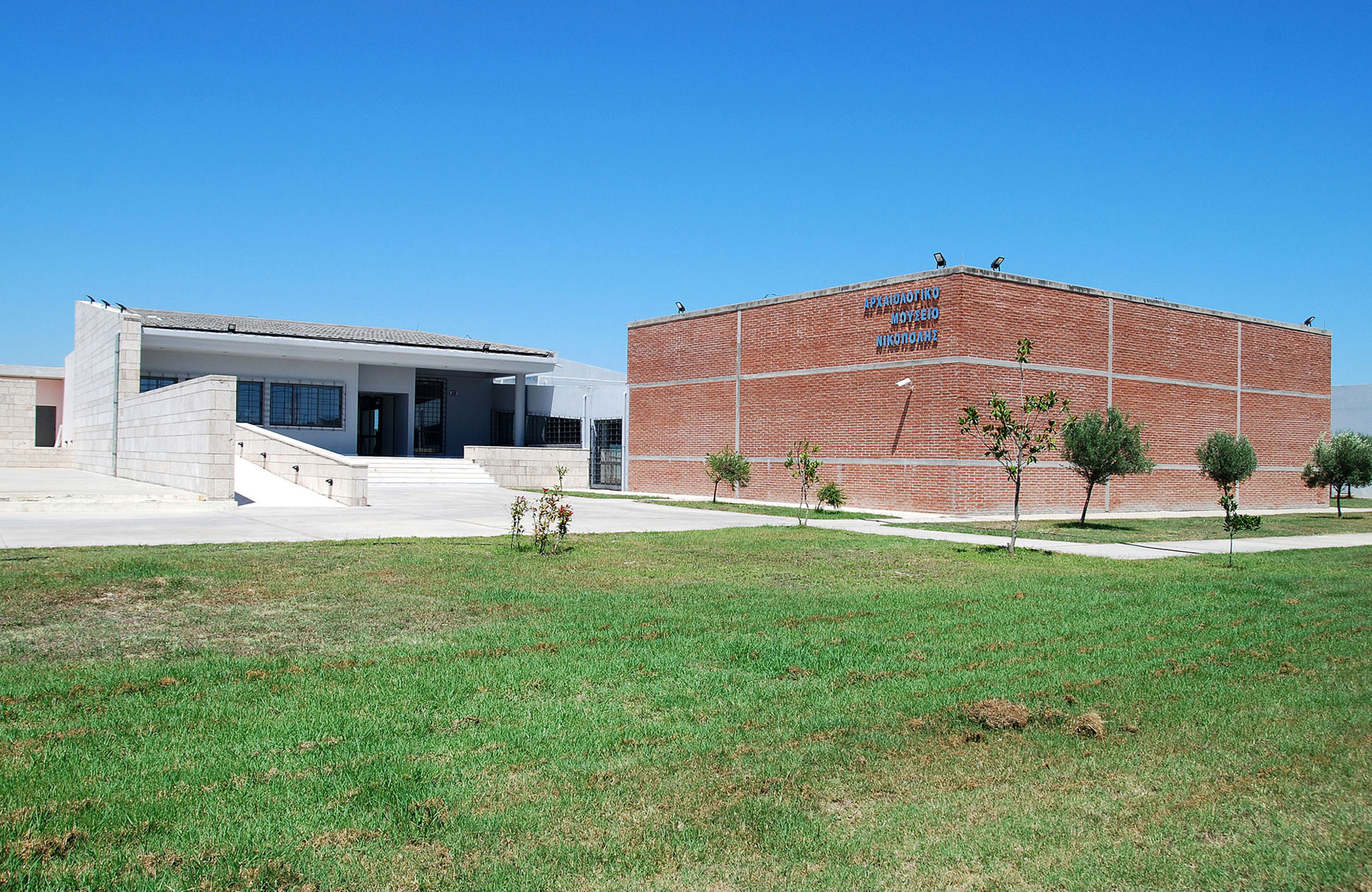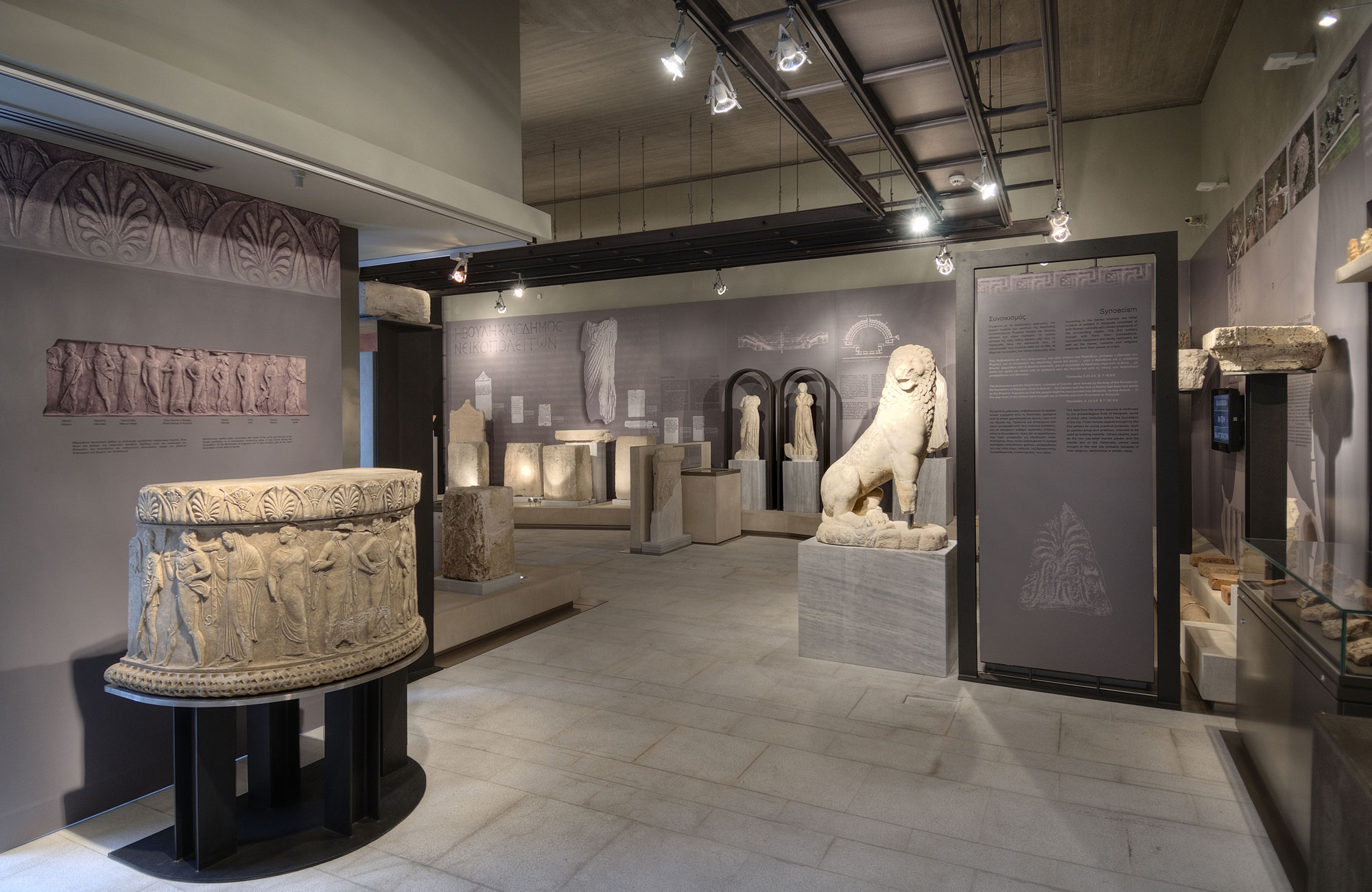History: Three Nicopolis Museums
1924 –The Archaeological Museum of Preveza
The initial endeavor to exhibit artifacts from Nicopolis was led by Alexander Filadelfeus, the first excavator of the archaeological site.
Filadelfeus diligently gathered portable findings from excavations that commenced shortly after the city’s liberation from Ottoman Rule in 1913. Initially, these artifacts were housed in the basement of Preveza’s town hall. Later, Filadelfeus converted the Turkish mosque, known as the Eski Mosque or Ag. Andreas, into a museum. The museum’s catalog, meticulously compiled by its founder, documented a diverse collection, encompassing sarcophagi, fragments of statues, lamps, figurines, glass vessels, Byzantine sculptures, medieval shields, and Ottoman reliefs.
In line with the exhibition methods and founding objectives of many provincial Greek museums established in the late 19th and early 20th centuries, this museum aimed to showcase Greece’s rich heritage and historical continuity. It gained significant recognition through local and Athenian press coverage, serving as a means to promote the discoveries and Nicopolis itself.
Regrettably, during the Greco-Italian war, the museum fell victim to bombing and was destroyed. A handful of antiquities were salvaged and relocated to a nearby junior high school, which was occupied by the Italian army. Sadly, the museum suffered further losses due to looting, with only a limited number of marble architectural elements and sarcophagi managing to survive.
1972 –The Old Nicopolis Museum
During the early 1960s, at the instigation of the late Antiquities Commissioner Sotiris Dakaris, construction commenced on a new facility to house the antiquities exhibition of Nicopolis. This structure was erected within the archaeological site itself, nestled in the southeastern corner of the early Christian city.
The endeavor was brought to completion a few years later, in 1969, under the direction of the late Ioulia Vokotopoulou, who also curated the exhibition of the discoveries. In 1972, the museum opened its doors to the public.
Upon entering the modest reception area, which housed the ticket counter and sales office, visitors encountered an array of exhibits. These included marble epitaph columns, an inscribed altar, a relief depicting Erodius riding a dolphin, and two city decrees.
Continuing through two consecutive rooms, visitors were greeted with free-standing sculptures of male and female figures, such as the declarant Athena, a statue resembling the young Herakleiotissa, and two Muse statues, among others. The collection also featured relief sarcophagi, architectural elements from Nicopolis buildings, and a Hellenistic-era marble lion-tomb monument. Coins, vases, and various small artifacts were artfully displayed in wooden showcases.
The arrangement of exhibits followed a linear and wall-based layout, with each room’s focal point being a prominent artifact. Visual aids were absent, and captions were provided only for select items. Reflecting the style of the era, which favored the exhibits to “speak” for themselves, the presentation was simple and neutral, with minimal accompanying information.
In the museum’s courtyard, numerous stone artifacts were thoughtfully arranged for visitors to explore.
2009 –The New Nicopolis Museum
In 2009, the archaeological site of Nicopolis welcomed a state-of-the-art museum. A year prior, the former “temporary” museum, as it had been referred to, was permanently closed.
The construction of this new museum, situated on the Preveza-Ioannina National Road between the city of Preveza and the archaeological site, spanned from 1999 to 2003, with further work carried out in 2005-2006. Funding for this project came from the Epirus Regional Operational Program (Community Support Frameworks II and III) as well as the Ministry of Culture. Over the subsequent three years, from 2006 to 2009, the museum’s permanent exhibition was meticulously curated with additional financial support from the Epirus Regional Operational Program andthe Community Support Framework III.
This impressive building boasts a total floor area of 2,150 square meters, featuring a sleek and uncomplicated design. Its facades combine various materials, including cement plinth, visible concrete, and tufa stone elements. Inside, you’ll find exhibition spaces along with essential facilities like changing rooms, a shop, a refreshments area, a media room, and restroom facilities. The museum also includes dedicated staff areas only with separate access. The basement includes storage facilities for the antiquities, as well as electrical and mechanical installations.
The permanent exhibition unfolds within two identical P-shaped rooms, Halls A and B, with opposing orientations. A surrounding corridor facilitates seamless movement between them.
The exhibition’s design meticulously captures the dual facets of the city: on one hand, it showcases the grandeur of Nicopolis as an administrative and economic hub, while on the other hand, it seeks to engage with the human dimension—the residents themselves who shaped, inhabited, and left behind remarkable legacies.
Embracing contemporary museological and museographic principles, the new museum’s exhibition has an anthropocentric focus, emphasizing its educational and social roles.



